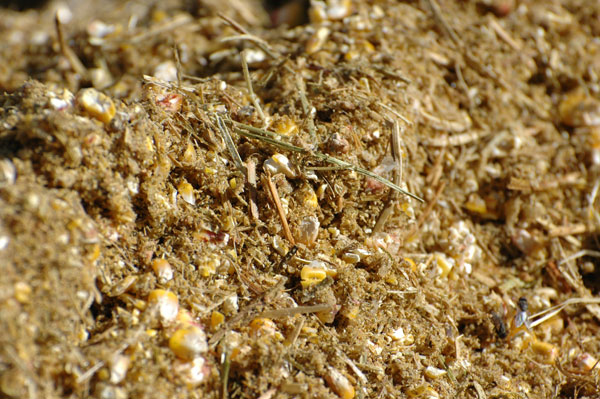Alternative feeds can help with winter supplementation costs.
August 27, 2015

Cattle can eat most anything. And that’s good, because there are alternative feeds that have adequate nutrition to use as a winter supplement and can help lower input costs as well.
Check with people who know what alternative feeds are available and its nutritional content. “This is where the cow-calf industry could use nutritional consultants,” says Ken Olson, Extension beef specialist at South Dakota State University. “Nearly every farmer today uses an agronomy consultant. Hog producers use nutritional consultants, and so does the poultry industry. Most cattle feeders use nutritional consultants.
“The cow-calf industry is the holdout; the producer is trying to make all of his or her own nutritional management decisions. Yet, nutritional consultants are in tune with what the localized by-product feed opportunities are,” Olson says. They could save you money, and possibly find something you can use in a feed program when traditional feeds are not available.

70+ photos showcasing all types of cattle nutrition
Readers share their favorite photos of cattle grazing or steers bellied up to the feedbunk. See reader favorite nutrition photos here.
But, like a finicky kid, if they haven’t eaten it before, it may be hard to get them to try it.
“Ranchers need to understand that cattle are neophobic, which means they are afraid of new foods,” says Jay Davison, crop specialist, Nevada Cooperative Extension, University of Nevada, Reno. They tend to avoid anything they didn’t grow up eating. Calves mimic their mothers, and eat what she eats. If confronted with a feed that mama didn’t teach them to eat, they may refuse it.
“When I was in school, we were taught that palatability of feeds depended on taste, mouth feel, nutritional content, etc. But now we know this isn’t true. Cattle preference is a learned behavior. Typically, if cattle will try it, and actually eat it, and if it doesn’t make them sick, they will eat a little more.” The big thing is to get cattle to try a new feed.
“For instance, producers in western Nevada have been growing teff (an annual grass) for a long time. When it was first introduced, many animals were reluctant to eat it. I advise producers who are selling this feed to ranchers, to let them know it will take a while for the animals to learn to eat it. They need to start out with just a little, then more, and after they learn its edible, they will eat it readily. When harvested properly, teff is a high quality forage, but the animals have to learn to eat it.”
You might also like:
Burke Teichert: Are you a low-input, high-management rancher?
13 new utility tractors for the ranch in 2015
Are feeder cattle prices on the cusp of a collapse?
How to prevent & treat pinkeye in cattle
60 stunning photos that showcase ranch work ethics
When is the best time to wean? It might be younger than you think
About the Author(s)
You May Also Like



